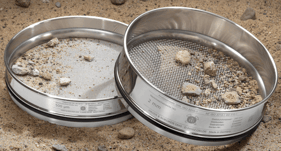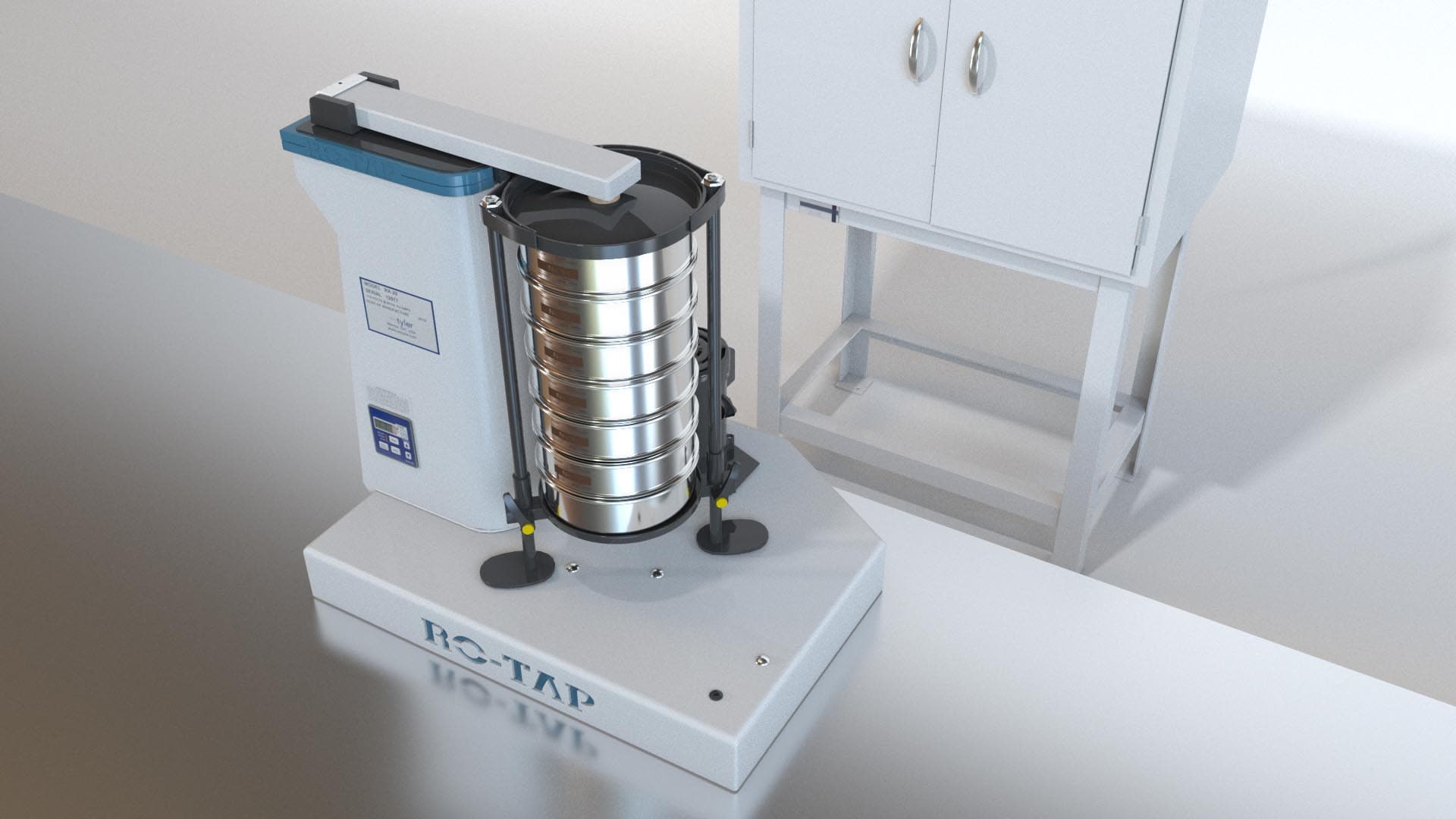Mechanical Sieve Shakers vs. Sonic Sifters: Which Should I Choose?
From agriculture to aggregates to pharmaceutical drugs, particle size analysis is one of the most integral methods in the world when it comes to industrial quality control. Failure to invest in a complete and thorough particle analysis process often results in inconsistent and ineffective products that hurt a brand’s reputation.
With several particle size analysis equipment, such as sonic sifters and mechanical sieve shakers, on the market, lab technicians must do the research necessary to ensure they select the instrument that will best accommodate their operation.
Having said that, which particle size analysis instrument should you be using: a sonic sifter or a mechanical sieve shaker?
The simple answer is that it comes down to the material you are working with.
As pioneers of the mechanical sieve shaker, the RO-TAP RX29, W.S. Tyler is here to use its 140 years of particle analysis experience to ensure you are using the best equipment for your needs.
With that, this article will provide insight into:
- What a sonic sifter is
- What a mechanical sieve shaker is
- How to use both devices
- The application both devices excel in
What Is a Sonic Sifter?
Sonic sifters are machines that create a vacuum of air through the use of sonic waves. The devices also employ a bladder at the bottom of the sieve stack to create a unique tapping motion.
As this tapping comes from the bottom, the particles slam against the above sieve, similar to an Alpine Air Jet Sieve e200 LS’s functions. This ensures any agglomerated particles get adequately broken down, and accurate results are achieved.
What Is a Mechanical Sieve Shaker?
Mechanical sieve shakers, such as the W.S. Tyler RO-TAP RX29, are machines that employ a motorized system to help particles make their way through a stack of test sieves. Each element of a mechanical sieve shaker works together to create the oscillating and tapping motions particles need to find each sieve’s mesh openings.
Mechanical sieve shakers, in particular, have been used for several decades and have proven to provide some of the most accurate, reliable, and repeatable results. It’s because of this that the RO-TAP sieve shaker is in dozens of industry standards.
How To Use a Sonic Sifter
Before using a sonic sifter, you must obtain a representative sample. After splitting your sample, you then assemble your sieve stack.
You will then need to assemble the fine particle collection assembly, which consists of a fine particle collection bladder and its holder hardware. You should then evenly distribute the representative sample over the top sieve in the stack.
At this point, the sieve stack should be placed on top of the fine particle collection assembly.
To ensure the sieve remains intact during testing, you need to place the sieve lock mechanism over the sieve stack. Be sure to press down until the mechanism snaps into place.
You can now place the sieve stack into the sonic sifter unit. You will now need to release the clamps at the bottom of the sieve stack lock mechanism. This will cause the stack to lock into the sonic sifter’s sieve chamber.
Now, close the protective cover, set the testing parameters, and turn the unit on.
How To Use a Mechanical Sieve Shaker
Before using a mechanical sieve shaker, you must first obtain a reliable representative sample. Once obtained, place your sieve stack (without the sample material) in your sieve shaker.
You then pour your representative sample into the top sieve of your sieve stack. To achieve optimal results, pour your sample as evenly around the surface of the top sieve as possible.
Once the representative sample has been poured in its entirety, place the test sieve lid on. This lid is used to prevent the sample material from falling off the edges and, in addition, is not durable enough to withstand the tapping of the sieve shaker hammer (performs tapping motion).
A second, more robust lid is then placed on top of the test sieve lid to soften the impact. You can now drop the hammer into place.
At this point, you configure the test settings and power on your machine. Once the sieve shaker has finished its cycle, it will turn itself off.
Sonic Sifter Applications
As stated above, Sonic Sifters carry out particle analysis similar to the Alpine Air Jet Sieve e200 LS. This leaves the unit with a significant advantage when working with agglomerating material.
Compared to a mechanical sieve shaker, the airflow inside a sonic sifter does a better job at separating individual particles that tend to agglomerate than the motion from a sieve shaker.
That said, Sonic Sifter can prove to be more efficient than Alpine Air Jet Sieves as they don’t require the time-consuming process of testing the material sieve by sieve.
Mechanical Sieve Shaker Applications
Mechanical sieve shakers are designed for use in a wide range of industries to test and separate particles. Several attachments can be attached to the device to expand its capabilities.
 With that, mechanical sieve shakers can sieve pretty much any material you need it to wet, dry, large, or small down to 20 microns. This, of course, is all dependent on the sieves you use in your shaker.
With that, mechanical sieve shakers can sieve pretty much any material you need it to wet, dry, large, or small down to 20 microns. This, of course, is all dependent on the sieves you use in your shaker.
Having said that, the finer the particle, the harder it will be to yield accurate sieve results with a mechanical sieve shaker.
Noise Level
As sonic sifters use sonic waves to generate a column of air and tapping motion to promote particle movement, some noise should be expected. However, sonic sifters stand out as one of the more quieter pieces of equipment and are much quieter than mechanical sieve shakers.
This is because mechanical sieve shakers utilize a hammer to create the tapping motion needed to assist particle agitation and facilitate particle movement. As a result these machines can be relatively noisy.
The RO-TAP RX29, for example, runs at around 85dB. That said, the noise level is heavily determined by the material you work with.
A sound enclosure cabinet can be purchased to reduce the noise of mechanical sieve testing.
Cost
Currently there are two mechanical sieve shakers offered by W.S. Tyler: The RO-TAP RX-29 and the RO-TAP RX-30. The RX-29 is designed to work with 8-inch test sieves whereas the RX-30 is designed to work with 12-inch test sieves and two of the most widely used mechanical sieve shakers.
That said, the RX-29 costs $3,652.85 whereas the RX-30 costs around $4,179.06.
In terms of sonic sifters, there are a handful of models on the market. Much like the RO-TAP product line, the biggest difference between these models are the type and size of test sieves you use.
With that, you can expect to pay anywhere from $8,999.75 to $9,956.93 if you desire to implement a sonic sifter into your operation.
NOTE: The price ranges of both devices does not include test sieves.
A Reliable Particle Size Analysis Starts With Reliable Equipment
Particle size analysis is one of the most reliable methods in the world when it comes to enhancing countless industries’ quality control. Without it, odds are your end product will not adhere to industry standards or meet customer expectations.
Now, to conduct a successful particle size analysis, you must employ equipment, such as sonic sifter or mechanical sieve shakers, that will deliver accurate and repeatable results for your operation.
Sonic Sifters are devices that use sonic waves and vertical/horizontal tapping to help particles move throughout a sieve. This unique combination of movement makes sonic sifter ideal for analyzing fine particles that often become agglomerated.
Mechanical Sieve Shakers use a motor to create an oscillating and tapping motion to promote particle movement. As they have been used for decades, lab technicians can use them for most particle size analysis; however, results may become more inconsistent with fine particles.
Having said this, no matter which machine you choose, the test sieves that get placed into the device can and should be certified regularly for the best results.
Having worked in the world of particle size analysis for over 140 years, W.S. Tyler is here to ensure your equipment continues to produce reliable results for years to come.
For more information about test sieve certification, refer to our Certification and Testing Services Page.
About Ronnie Brown
Ronnie is the Content Writer for W.S. Tyler and has four years of experience as a professional writer. He strives to expand his knowledge on all things particle analysis and woven wire mesh to leverage his exceptional writing and graphic design skills, creating a one-of-a-kind experience for customers.




